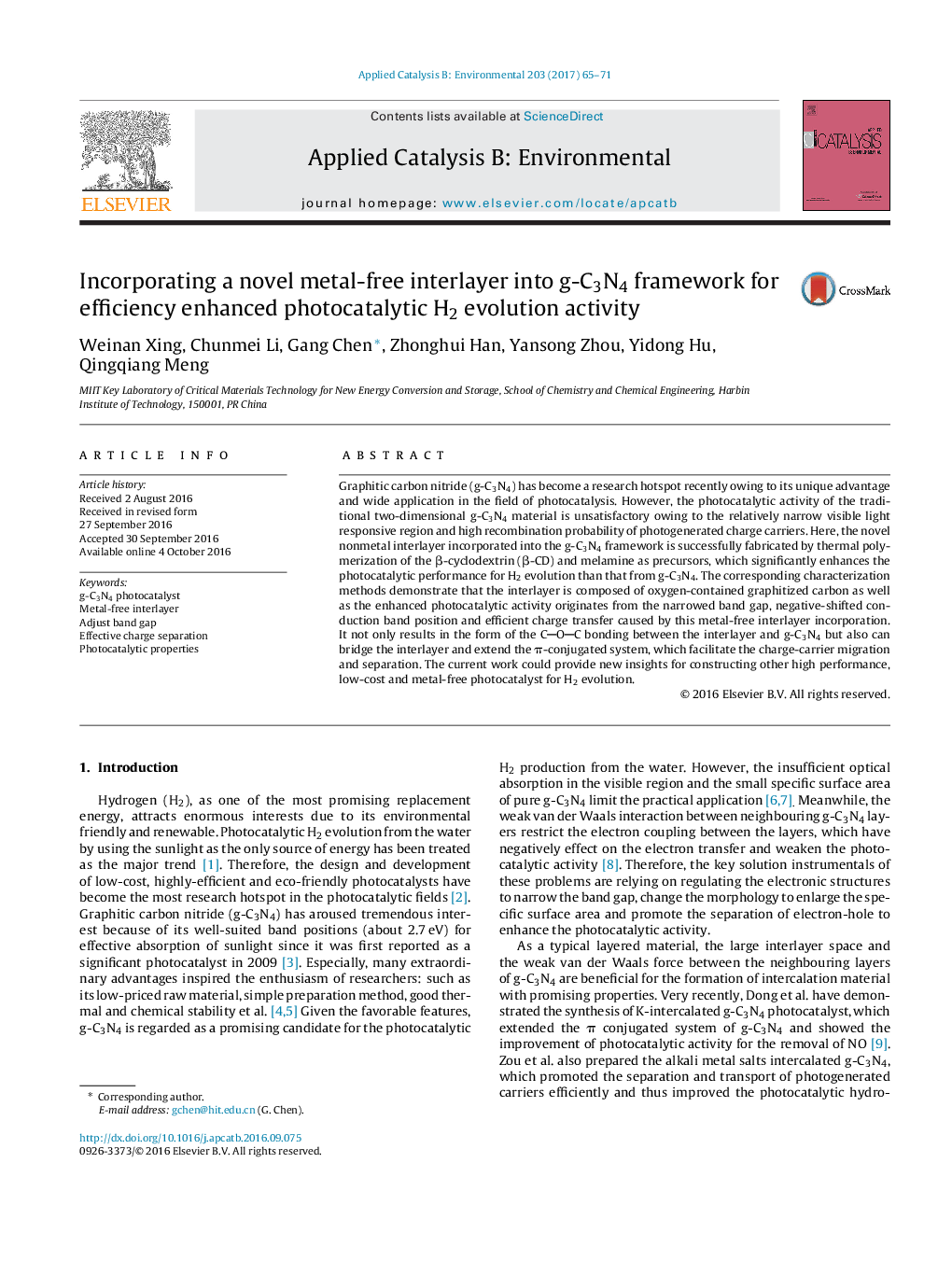| Article ID | Journal | Published Year | Pages | File Type |
|---|---|---|---|---|
| 6454422 | Applied Catalysis B: Environmental | 2017 | 7 Pages |
â¢The novel nonmetal interlayer incorporated into the g-C3N4 framework is successfully fabricated.â¢It exhibits the improvement of photocatalytic activity in H2 evolution.â¢The introduction of nonmetal interlayer effectively adjusts band gap and increases the separation efficiency of charge carriers.â¢A possible photocatalytic mechanism is proposed.
Graphitic carbon nitride (g-C3N4) has become a research hotspot recently owing to its unique advantage and wide application in the field of photocatalysis. However, the photocatalytic activity of the traditional two-dimensional g-C3N4 material is unsatisfactory owing to the relatively narrow visible light responsive region and high recombination probability of photogenerated charge carriers. Here, the novel nonmetal interlayer incorporated into the g-C3N4 framework is successfully fabricated by thermal polymerization of the β-cyclodextrin (β-CD) and melamine as precursors, which significantly enhances the photocatalytic performance for H2 evolution than that from g-C3N4. The corresponding characterization methods demonstrate that the interlayer is composed of oxygen-contained graphitized carbon as well as the enhanced photocatalytic activity originates from the narrowed band gap, negative-shifted conduction band position and efficient charge transfer caused by this metal-free interlayer incorporation. It not only results in the form of the COC bonding between the interlayer and g-C3N4 but also can bridge the interlayer and extend the Ï-conjugated system, which facilitate the charge-carrier migration and separation. The current work could provide new insights for constructing other high performance, low-cost and metal-free photocatalyst for H2 evolution.
Graphical abstractA novel metal-free intercalated g-C3N4 is successfully fabricated by thermal polymerization of the β-cyclodextrin and melamine as precursors, which significantly enhances the photocatalytic performance for H2 evolution.Download high-res image (163KB)Download full-size image
